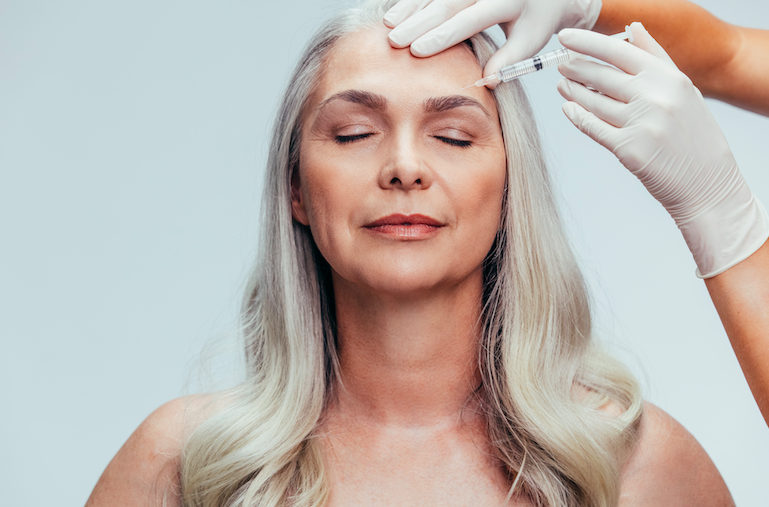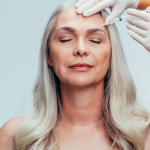Are you considering a cosmetic procedure to rejuvenate your appearance and bid farewell to those bothersome wrinkles? If so, you've likely come across the terms "Botox" and "Dysport" during your research. These two popular injectable treatments have become go-to solutions for many seeking smoother and more youthful-looking skin. But what exactly are the similarities and differences between Botox and Dysport? Let's dive in and discover the distinct features that set them apart.
Similarities: The Quest for Smooth Skin
Before we explore their differences, let's take a moment to appreciate the common ground shared by Botox and Dysport. Both treatments belong to a class of cosmetic procedures known as neuromodulators, aiming to reduce the appearance of fine lines and wrinkles. They are primarily used to target dynamic wrinkles, which are formed due to repetitive facial muscle movements like smiling or frowning.
The underlying mechanism of action is what unites these two injectables. Both Botox and Dysport utilize a purified form of the botulinum toxin, a protein that temporarily blocks nerve signals in the targeted muscles. By doing so, these treatments relax the muscles responsible for the formation of wrinkles, resulting in smoother skin and a more youthful appearance.
Differences: A Matter of Distinction
Now that we've acknowledged their shared objective, it's time to shed light on the key differences between Botox and Dysport. While they operate on the same principle, there are several factors that set them apart:
1. Potency and Diffusion:
Botox, the elder statesman of the neuromodulator game, is known for its potent formulation. Due to its higher concentration, Botox tends to be effective in smaller doses, making it suitable for precision treatments. Its dense composition also restricts its diffusion, meaning it generally stays in the localized area of injection.
Dysport, on the other hand, has a slightly lower potency and a more diluted formulation. Consequently, it often requires larger doses compared to Botox. However, Dysport boasts a broader diffusion pattern, allowing it to cover a wider treatment area with a single injection.
2. Onset and Duration:
When it comes to the speed at which you can expect to see results, Botox and Dysport have differing timelines. Botox usually takes a bit longer to showcase its full effects, with visible improvements appearing within 5-7 days after treatment. In contrast, Dysport tends to act a little faster, often displaying noticeable changes in as little as 2-3 days.
Regarding the longevity of the results, Botox and Dysport have similar durations, typically lasting around 3-4 months. However, individual experiences may vary. The lifespan of these effects can be influenced by factors such as metabolism, lifestyle, and the specific area treated.
3. Dosage and Spreading:
Due to the variations in potency and diffusion patterns, Botox and Dysport require different dosage calculations. Since Botox is highly concentrated and less prone to spreading, it is typically administered in targeted areas where precise control is essential. On the other hand, Dysport's wider dispersion necessitates larger doses, making it suitable for treating larger areas with a single injection.
The Final Verdict
When it comes to deciding between Botox and Dysport, there is no one-size-fits-all answer. Your choice will depend on factors such as your desired outcome, the treatment area, and the recommendations of your qualified healthcare provider. It's crucial to consult with a licensed professional who can assess your unique needs and guide you toward the most appropriate option.
Remember, regardless of the choice you make, both Botox and Dysport have been extensively studied. Both treatments have been approved by regulatory authorities for their safety and efficacy in the field of cosmetic procedures. They have a long-standing track record of success in helping individuals achieve smoother, more youthful-looking skin.
Before undergoing any cosmetic treatment, it's important to have realistic expectations and understand that results may vary from person to person. Factors such as skin type, age, and overall health can influence the outcome of the procedure. Additionally, it's crucial to disclose any relevant medical history or medications you may be taking to ensure the safest and most effective treatment.
Ultimately, the decision between Botox and Dysport should be made in consultation with a qualified healthcare provider who has experience in cosmetic procedures. They will be able to assess your specific needs and goals, taking into account your unique facial anatomy and desired outcome. Their expertise will help guide you toward the option that is most likely to deliver the results you desire.
In conclusion, while Botox and Dysport share similarities in their purpose of reducing wrinkles, they have distinct characteristics that set them apart. Botox offers a higher potency and more localized effects, while Dysport provides broader diffusion and a faster onset of action. The choice between the two will depend on factors such as the treatment area, desired outcome, and the recommendations of your healthcare provider. By understanding these similarities and differences, you can make an informed decision and embark on your journey to smoother, more youthful-looking skin. For the best Botox treatment Nashville has to offer, visit the experts at Melrose Aesthetics. With our dedicated and highly experienced staff, you will be treated like family and guided through every stage of the process.
Disclaimer: This article is for informational purposes only and does not constitute medical advice. Consult a qualified healthcare professional for personalized recommendations and guidance regarding cosmetic procedures.



